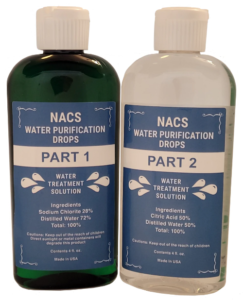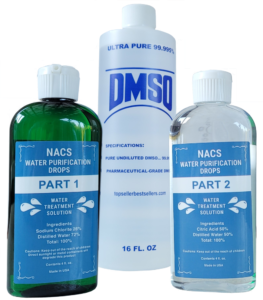I want to share something deeply personal with you. My pet is the most precious being in my life, and I know many of you feel the same way. The hardest part about having a pet is knowing that their lives are often shorter than ours. Saying goodbye to a beloved pet, who feels like a family member, is truly heartbreaking. The recovery process is devastating, but with time, hope emerges, and the possibility of finding healing and loving another pet becomes real.
I am committed to doing everything I can to extend the lives of my cherished pets. I invest in natural, high-quality imported foods and supplements for them, often spending more on their nutrition and health than on my own. My goal is to ensure that my best friend can live the longest, healthiest life possible by my side.
I was fortunate to discover a simple and inexpensive supplement that has the potential to extend our pets’ lives. This supplement acts like a fountain of youth, helping adult cats regain their playful kitten-like behavior and older dogs recover their youthful energy. Widely used as a water purifier by hikers, campers, and the military, this supplement has proven to be a game-changer.
I learned about chlorine dioxide, also known as MMS (Miracle Mineral Solution), from Paris Humble and her father, Jim Humble. They have written extensively about its benefits, and many veterinarians are beginning to recognize its potential. I pray that you, too, can learn about it and consider it for your pets.
Together, let’s do everything we can to ensure that our pets live long, healthy lives by our side.
Here is more information for you to examine:
When it comes to the health and well-being of our furry friends, veterinarians are vital. They possess the knowledge and skills to diagnose and treat animals effectively and are always striving for new methods to ensure top-quality care. This is where chlorine dioxide becomes relevant to increase pet life expectancy.
Chlorine dioxide, commonly known as MMS (Miracle Mineral Solution), has been acknowledged by veterinarians for its potential healing properties. As a strong oxidizing agent, it has the ability to combat various pathogens including bacteria, viruses, fungi, and parasites. The veterinary community has been investigating its potential use in treating a diverse array of conditions to add years to the lives of both dogs and cats.
Chlorine dioxide has demonstrated positive outcomes for a variety of health concerns, ranging from skin conditions (like dermatitis and hot spots) to respiratory problems (including kennel cough and feline asthma) ensuring they live long and youthful lives, free of the effects of aging and deterioration. It has also proven effective in promoting oral hygiene, fighting dental ailments like gingivitis and periodontal infections.
Prior to prescribing chlorine dioxide treatment for pets, veterinarians conduct a thorough assessment of each case. This includes taking into account the overall health of the animal, specific symptoms observed, and any preexisting medical conditions. By customizing the dosage and duration of treatment based on individual requirements, they strive to achieve optimal results while minimizing any possible adverse effects.
Through the use of chlorine dioxide as a treatment option, veterinarians are offering pet owners an alternative method that can enhance traditional therapies or act as its own stand-alone solution in specific situations. The increasing attention towards this compound highlights the ever-changing landscape of veterinary medicine, constantly striving for improved outcomes and increased life expectancy for patients.
The application of chlorine dioxide by veterinarians is a common practice.
Veterinarians play an indispensable role in safeguarding the health and welfare of our beloved companion animals. When addressing specific medical issues, they frequently rely on chlorine dioxide as a valuable resource. However, precisely how do veterinarians utilize this potent compound?
Veterinarians often utilize chlorine dioxide for its antimicrobial properties, effectively eliminating harmful bacteria, viruses, fungi, and other pathogens that can lead to canine and feline infections, illnesses, or advanced symptoms of aging.
A veterinary disinfectant serves as a sanitary agent for animals for extra life-extension.
Veterinarians have found chlorine dioxide to be effective in disinfecting different surfaces, including examination tables, kennels, and surgical equipment. This is crucial in preventing the transmission of germs and diseases in veterinary clinics and animal hospitals.
In order to effectively sanitize surface areas, veterinarians utilize a two-part kit that produces chlorine dioxide as needed. By combining one drop of Part 1 with one drop of Part 2 and allowing it to activate for 30 seconds, fresh chlorine dioxide is created. The desired strength and size of the area may require additional drops in this one-to-one ratio, which can then be diluted with water before being applied through a spray bottle.
Using chlorine dioxide to treat pets.
Along with surface disinfection, veterinarians may also prescribe chlorine dioxide for oral or topical use in treating specific pet conditions. For instance, to combat dental problems such as periodontal disease or gingivitis, chlorine dioxide mouthwashes can effectively eliminate harmful bacteria and improve oral health.
Moreover, in instances of skin infections like dermatitis or hot spots in dogs and cats, veterinarians may suggest using topical solutions with diluted chlorine dioxide to eradicate the root cause of the infection.
It should be noted that under veterinary supervision, chlorine dioxide has shown effectiveness for these purposes. Therefore, pet owners should always consult a veterinarian before attempting self-treatment.
Frequent Canine Health Issues
As our faithful companions, dogs may be susceptible to a range of health problems over the course of their lives. Therefore, it is crucial for pet owners to stay informed about these typical ailments and take preventative actions in order to maintain the well-being of their beloved pets.
Skin allergies are a frequent concern among dogs, resulting in itchiness and irritation that can cause them discomfort. These allergies may be triggered by elements in their surroundings or certain foods they are sensitive to. Another common area of trouble for dogs is their oral health, which includes gum disease and tooth decay. To keep your dog’s mouth healthy, it’s crucial to regularly brush and schedule professional cleanings.
Furthermore, it is not unusual for dogs to experience gastrointestinal problems such as diarrhea or vomiting. These signs could be indicative of underlying health issues such as dietary indiscretion or gastrointestinal infections. Moreover, aging dogs may develop joint issues, like arthritis, which can lead to discomfort and restricted mobility.
Additionally, our canine companions, particularly those with droopy ears conducive to bacterial growth, often experience ear infections. Unfortunately, obesity is a widespread issue among dogs nowadays as a result of inadequate physical activity and unhealthy eating habits.
This list gives an overview of common ailments in dogs, but it’s important to keep in mind that each dog has its own individual requirements and vulnerabilities. Seeking advice from a veterinarian regarding any worrisome symptoms or behaviors shown by your cherished companion is always the best approach to keeping them healthy.
Feline afflictions that are frequently seen
Despite their adorable and independent nature, cats are not exempt from health problems. Like humans, our feline companions can experience various ailments that can affect their overall health. While certain illnesses are more prevalent than others, it is crucial for cat owners to remain vigilant and proactive in caring for their pets’ well-being.
A common concern for cats is dental problems, which can cause discomfort and pain. To avoid this, it is important to schedule regular check-ups and maintain good oral hygiene habits.
UTIs are a common issue often observed in cats. Signs such as increased urination, presence of blood in the urine, or changes in litter box habits can be indicative of a UTI. It is important to seek prompt veterinary care in order to relieve any discomfort caused by this condition.
Feline upper respiratory infection (URI) is a frequent occurrence in cats. It can present with symptoms such as sneezing, coughing, nasal discharge, and lethargy. It’s crucial to provide supportive care and consult with a veterinarian if symptoms persist or worsen.
Moreover, the rise in obesity rates among domesticated cats is a growing cause for concern. A sedentary lifestyle coupled with excessive food intake can result in weight gain, increasing their susceptibility to health complications such as diabetes and joint ailments.
Some common health issues that cats may experience include those mentioned above. However, every cat is different, so it is crucial for owners to take note of their pet’s specific needs and schedule regular visits to the vet.
In order to properly care for dogs with chlorine dioxide, certain steps must be taken.
Veterinarians have discovered that chlorine dioxide is a highly effective treatment for dogs. This versatile compound has been successful in addressing various health issues in our furry companions, including gastrointestinal problems, respiratory infections, and skin conditions.
A popular way to give chlorine dioxide is through Part 1 of the two-part kit. Unlike Part 2, it does not need to be activated beforehand. The sodium chlorite in Part 1 will be activated by the dog’s stomach acid upon reaching the stomach, creating chlorine dioxide. Both Part 1 and Part 2 must be activated in equal amounts for disinfection and sanitization purposes, and can also be diluted for topical use.
DMSO is commonly utilized topically at a one-to-one ratio with other ingredients, such as Part 1 and Part 2. After activation for 30 seconds, this results in one drop of activated chlorine dioxide that can then be diluted with an ounce of distilled water. A standard mixture would involve combining one ounce each of chlorine dioxide, distilled water, and 99%+ DMSO before applying to the designated skin area. It is important to note that any leftover solution should be discarded due to its decreased effectiveness over time, so it is recommended to only prepare enough for immediate use.
The sodium chlorite drops can be easily added to your dog’s food or water. It is important to carefully adhere to the veterinarian’s instructions and never surpass the recommended amount.
Chlorine dioxide has been found beneficial for dogs experiencing gastrointestinal problems like diarrhea or vomiting. It works by targeting harmful bacteria in the digestive tract, promoting balanced digestion and reducing symptoms.
Moreover, for dogs experiencing respiratory infections such as kennel cough or bronchitis, the use of chlorine dioxide can aid in relieving congestion and promoting relief. This is due to its ability to eliminate the viruses and bacteria responsible for these types of respiratory illnesses.
When applying chlorine dioxide topically on your dog’s skin for conditions like hot spots or fungal infections, it is crucial to dilute it correctly beforehand. This will prevent any irritation to your dog’s delicate skin while effectively fighting against the microbes that cause inflammation.
Keep in mind that the use of chlorine dioxide has proven effective in treating a range of canine illnesses when used properly with guidance from your veterinarian. It’s important to note that results may differ in each case. Be sure to closely observe your pet throughout the treatment process and promptly inform your vet of any negative reactions.
By seeking out professional supervision and considering alternative treatments like chlorine dioxide, you are actively working towards enhancing the overall health and well-being of your beloved furry companion!
One method for treating cats with chlorine dioxide.
In regards to using chlorine dioxide for cats, veterinarians advise a meticulous and exact method. This potent substance has the ability to treat various conditions in our beloved felines, such as respiratory infections, parasites, skin irritations, and urinary tract problems. Its uses are extensive.
Prior to starting any form of treatment, it is crucial to seek advice from your veterinarian. They will evaluate your cat’s individual situation and give personalized recommendations on the best course of action. In the majority of situations, chlorine dioxide is given orally by using diluted drops or by adding it to their water bowl.
For optimal outcomes, consistency is crucial. It is important to adhere to the recommended dosage instructions given by your vet and stick to a routine treatment plan. Avoid giving your cat more than the prescribed amount, as this could be harmful to their well-being.
A frequently used approach for applying chlorine dioxide involves using drops from Part 1 of the two-part kit. Unlike Part 2, this does not need to be activated beforehand because the cat’s stomach acid will activate the sodium chlorite in it when consumed. Keep in mind that both parts should be mixed and diluted in equal amounts for disinfection and sanitization purposes, as well as for topical use.
DMSO is commonly utilized topically, typically in a one-to-one ratio. This means combining equal amounts of Part 1 and Part 2 and letting it sit for half a minute to create one drop of activated chlorine dioxide. This can then be diluted with an ounce of distilled water. An appropriate DMSO mixture would involve mixing one ounce of the activated solution with another ounce of 99%+ DMSO before applying it to the desired area on the skin. It is important to discard any leftover solution as it will lose its potency quickly, so only prepare the amount needed for use.
Ensure you adhere to the veterinarian’s guidelines and avoid surpassing the recommended amount when adding Part 1 (sodium chlorite) drops to your cat’s food or water.
It should be emphasized that although chlorine dioxide can effectively combat various cat ailments, it must always be used with professional oversight. Your veterinarian will closely monitor its effectiveness and make any necessary adjustments.
Keep in mind that each cat has its own individual needs, so what may be effective for one may not necessarily be effective for another. It is always wise to consult with a professional before trying out any treatment involving chlorine dioxide or other substances.
Through the fusion of veterinary knowledge and proper usage methods, we can tap into the potential advantages of chlorine dioxide while also guaranteeing that our beloved furry friends receive the best possible care.
Which should be chosen, chlorine dioxide or sodium chlorite?
When deciding whether to use chlorine dioxide or sodium chlorite to treat dogs and cats, there are some key considerations. Each substance has its own advantages and disadvantages, so the best choice will depend on your pet’s individual requirements.
With its potent disinfectant capabilities, chlorine dioxide is highly effective against a wide range of microorganisms. Your beloved pet can benefit from its ability to eliminate bacteria, viruses, fungi, and other harmful pathogens that may be causing health concerns. As a result, it is an excellent option for combatting infections and halting the spread of illness.
When administering chlorine dioxide to your pets, it is crucial to begin with a small amount and gradually raise the dosage as needed. This approach helps their systems adapt to the treatment and reduces the likelihood of adverse reactions.
Heed the guidance of your veterinarian: Your chosen professional is the ultimate authority on utilizing chlorine dioxide to treat your furry companions. They will supply you with precise directions regarding dosage and frequency for administering the treatment.
In addition to utilizing chlorine dioxide as a treatment, it is essential to uphold proper hygiene practices for the well-being of your pets and to prevent additional health issues.
Every pet is one-of-a-kind, meaning what may be successful for one may not be as effective for another.
It is important to seek guidance from a veterinarian before beginning any unfamiliar treatments or administering medications to your cherished furry friends.






